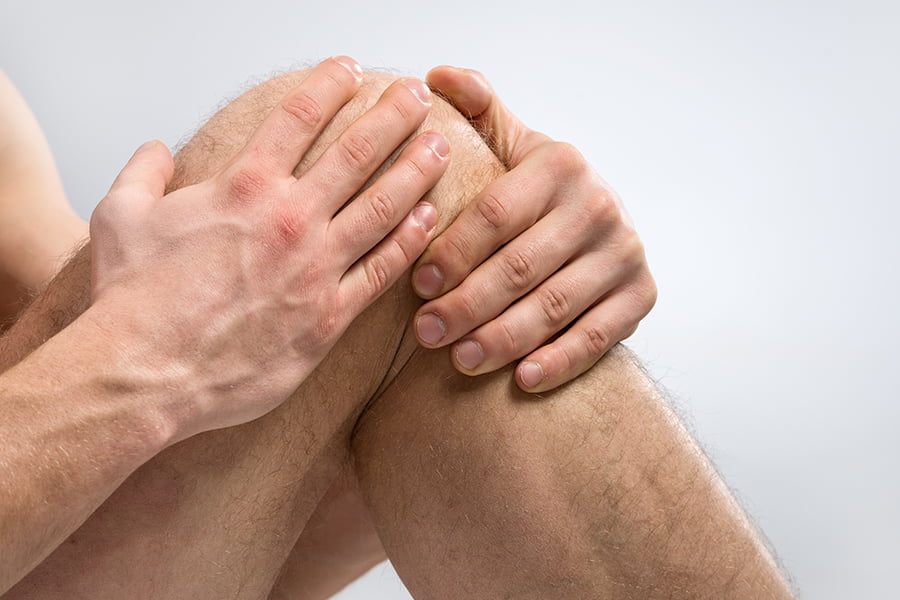
Prepatellar bursitis is often referred to in relation to its cause, such as “housemaid’s knee,” because most of those afflicted are people who are required to work on their knees, such as plumbers, roofers, carpet layers, and garden workers. Or they may be athletes who participate in a sport that commonly results in direct blows to the knee. Prepatellar bursitis can also result from a motor vehicle accident, a fall, or other trauma to the knee. It can be problematic for people who are obese, or who have rheumatoid arthritis and gout. If you have ever awakened to discover that the top of your knee is red, swollen, and warm to the touch, you likely have prepatellar bursitis.
The knee is surrounded by three major bursa sacs, which are closed sacs of fluid that serve to reduce friction between body tissues as they rub over one another. The prepatellar bursa is located at the tip of the knee over the kneecap. When it becomes inflamed because of one of the activities mentioned earlier, it commonly leads to rapid swelling on the front of the kneecap, skin that is tender and warm to the touch, and pain, most acutely with motion.
If you experience prepatellar bursitis, contact your physician immediately. The inflammation can rapidly become infected, making treatment more complicated. In rare cases, cellulitis, a bacterial infection of the skin and tissues below the skin, can develop. If not properly treated, it can occasionally spread to the bloodstream and cause a serious bacterial infection of the bloodstream and lymph nodes.
In fact, how your prepatellar bursitis is treated will depend on whether or not an infection is involved. If there is no infection, the condition can be treated with ice compresses, rest, and anti-inflammatory and pain medications as needed. Often your physician will remove (or aspirate) the bursa fluid with a needle and syringe both to provide some relief and to obtain a sample to culture for the presence of bacteria. He or she may also require X-rays of the knee in order to rule out other structural causes of the inflammation. Occasionally, particularly extreme swelling can be treated with an injection of cortisone into the swollen bursa.
On the other hand, if the aspirated fluid is found to contain infection-causing bacteria, antibiotics will be administered, in many cases intravenously. As a precautionary measure, your physician may prescribe a regimen of antibiotics prior to receiving the lab results on the aspirated fluid. Several aspirations of the knee may be required in order to remove the infected fluid. Less commonly, surgical drainage and removal of the infected bursa sac may be necessary.
While prepatellar bursitis is not uncommon, there are certain steps that can be taken to prevent its occurrence or recurrence. If you are going to be working on your knees for an extended period, or if you participate in contact sports that may result in trauma to the knees or legs, wear kneepads. Rest your knees on a regular basis and stretch your legs; alternatively, reduce the amount of time spent on your knees by switching activities after a time. Applying ice and elevating your legs after an extended period of time on your knees or following a leg intensive workout can also go a long way to reduce the risk of prepatellar bursitis.
If these steps do not relieve your knee pain, call us at 239-596-0100 to schedule an appointment.
For more information on this subject, call The Zehr Center for Orthopaedics at 239-596-0100 or visit www.zehrcenter.com. The information contained herein is compiled from a variety of sources. It may not be complete or timely. It does not cover all diseases, physical conditions, ailments, or treatments. The information should NOT be used in place of a visit with your healthcare provider, nor should you disregard the advice of your health care provider because of any information you read on this topic.